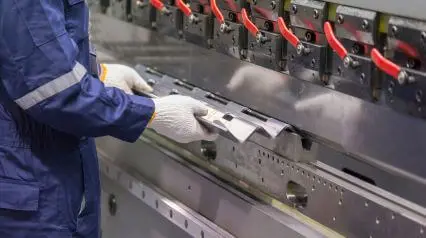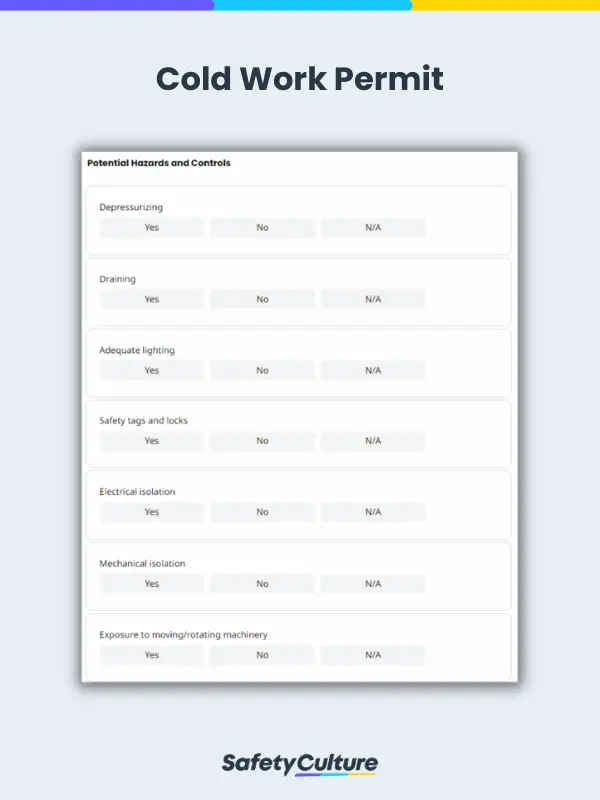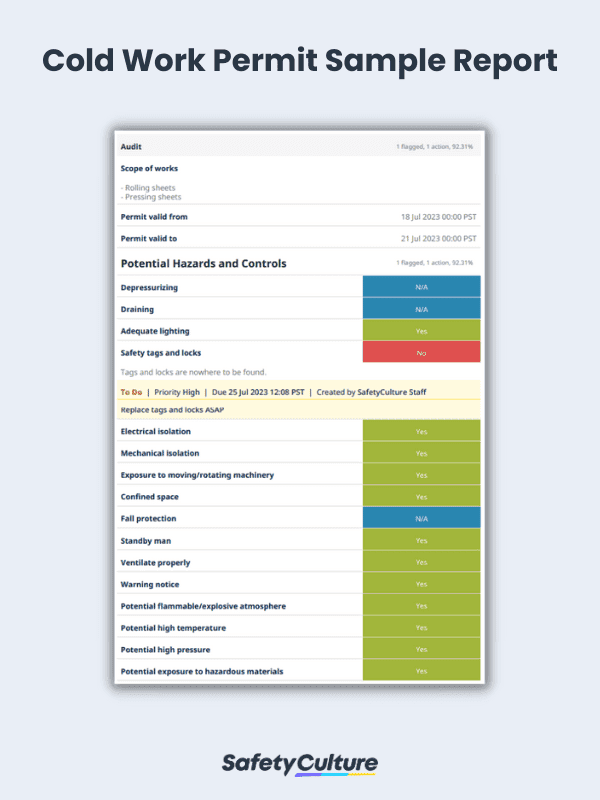What is a Cold Work Permit?
A cold work permit is a document required in certain workplaces that employees fill up and submit before conducting cold work tasks. Filling up a cold work permit ensures that the worker or workers are aware of the required safety procedures to follow, the possible risks they may be exposed to, and the necessary methods to mitigate them if necessary.
Importance of Permits for Cold Work
Cold work is any work done that does not require heat or sparks in the form of burning, melting, and igniting. It involves manipulating materials such as metal below their recrystallization temperatures, which is the minimum temperature for plastically changed metals to create new grains or crystals at a certain time. Although no flame or sparks are involved, cold work is an essential part of many construction and manufacturing tasks as it helps in creating and connecting different parts of a greater project.
However, cold work still comes with risks, which is why a permit to work for this specific work exists. It helps inform workers about the possible risks they may face at work, as well as the necessary precautions to take before them and when mitigating them. It ensures the safety of workers at all times, as well as that of those around them. This is the case for cold work done in manufacturing plants, ships, civil maintenance, insulation, and piping.
A cold work permit also ensures that all safety regulations are followed. Using one can help stay compliant with both internal and legal safety requirements, which also further promotes workplace safety and productivity among employees.
What are the Hazards Faced During Cold Work Activities?
Common hazards brought about by cold work include the following:
- Exposure to harsh temperature changes and chemicals
- Falling from heights
- Flying parts from equipment that can cause harm
- Overexertion of muscles from operating heavy machinery
- Tripping from stray parts and equipment
These hazards should be taken into account when creating and managing your cold work permits, either as part of the documentation itself or in the briefing before work. It’s essential to write them down, however, so that workers do not miss them.
For this reason, consider utilizing a digital platform to host, create, and manage your cold work permits. By going digital, you can ensure that all employees have access to cold work permits and guidelines on-hand, as well as track their movement and work processes from afar.
What to Include in a Cold Work Permit
Ideally, your digital cold work permit should contain fields for the following:
- Permit validity period
- Potential hazards to be aware of such as changes in pressure, extreme temperatures, flammable materials, possible confined spaces to enter, ventilation issues, and exposure to rotating machinery
- Control measures for each hazard, such as fall protection, a list of equipment to use for assistance, proper ventilation processes, and the correct way to maintain proper pressure and liquids
- Lock-out tag-out protocols
- Personal Protective Equipment (PPE)
- Full name and signature of the issuer
- Full name and signature of workers
Here is a cold work permit example for reference:
How to Use It
There is no one single way to use a cold work permit, as processes tend to differ per industry and country. However, a cold work permit typically goes through this cycle:
- Employers determine whether a permit is required for a specific task or project. Assess the working conditions, temperature levels, duration of exposure, and any potential risks associated with the cold work environment.
- Workers who are required to work or want to work in cold work should gather all the necessary documentation and information required for the permit, as well as attend training as needed.
- Workers submit the completed application to the appropriate authority or department responsible for issuing cold work permits as directed by the employer. Ensure that the application is filled out accurately with all the required information.
After the cold work permit has been submitted, the relevant authority will review the documentation and assess the proposed work plan. If all requirements have been met and all control measures have been set, the permit will be approved. The authority will then issue the cold work permit, specifying the approved conditions, duration, and any additional instructions or restrictions.
FAQs about Cold Work Permits
Some of the most commonly cold worked materials include:
- Stainless steel
- Copper
- Cobalt
- Nickel-based and aluminum alloys
- Certain titanium-grade materials
Hot work permits are used for tasks involving materials that will require sparking, heating, melting, and welding. On the other hand, cold work permits are designed for activities that do not require extreme heat and sparking.
In most cases, it is the responsibility of the person managing a certain department or equipment to issue and create a cold work permit. This can also be done by the employer depending on the situation.




